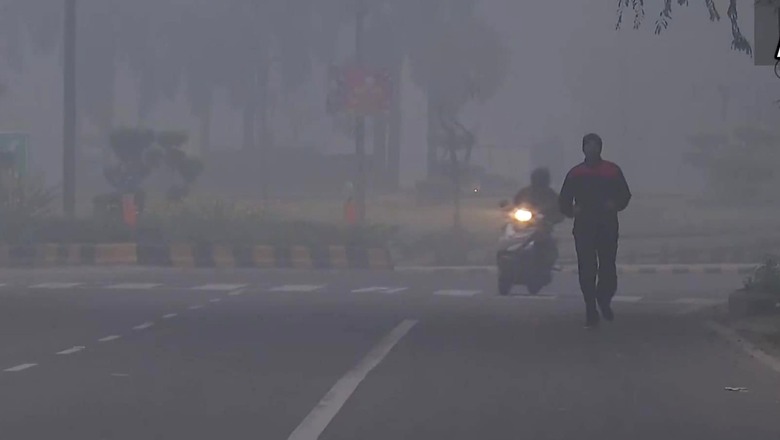Day Before New Year's Eve, Mercury Dips Further in North India; Dense Fog, Rains Add to Winter Chill

views
A cold wave swept north India, especially Delhi and Uttar Pradesh, on Thursday as citizens gear up to ring in a chilly New Year with the weather department predicting similar conditions till January 3.
Around 5:30 am on Thursday, dense fog at isolated pockets was reported over Uttar Pradesh and shallow to moderate fog in isolated pockets over Delhi, east Bihar, east Rajasthan, Madhya Pradesh, Tripura and south-interior Karnataka.
Visibility dropped below 50 metres in UP’s Bareilly and Lucknow, below 200 in UP’s Prayagraj, MP’s Gwalior and Bhopal, and below 500 in Delhi’s Safdarjung, Kota, Bhagalpur, Sagar, Jabalpur and Bangalore.
The IMD classifies fog to be “dense” when visibility drops below 200 metres, while it is classified as “very dense” when it drops below 50 metres. Visibility between 200 and 500 metres is “moderate” while between 500 and 1,000 metres is “shallow” fog.
Uttar Pradesh has been reeling under winter chill for the last three to four days with rains lashing the area, prompting district authorities to shut schools. According to the meteorological department, the state will continue to see reduced temperatures till next week. The highest rainfall has been recorded in Varanasi, while the minimum temperature in Banda was recorded at 5 degrees Celsius. There is no hope of respite from the severe cold in the coming few days. The rain will further increase the cold, the weathermen said.
The minimum temperature at Delhi’s Safdarjung Observatory, considered the official marker for the national capital, dropped sharply to 3.4 degrees Celsius, four notches below normal. On Wednesday it was 8.4 degrees Celsius.
The automatic weather stations at Delhi’s Ayanagar and Narela on Thursday recorded a minimum temperature of 3.8 degrees Celsius and 3.2 degrees Celsius, respectively. In the plains, the India Meteorological Department (IMD) declares a cold wave if the minimum temperature dips to 4 degrees Celsius. A cold wave is also declared when the minimum temperature is 10 degrees Celsius or below and is 4.5 notches less than normal.
Delhi had experienced cold wave conditions on December 20 and 21 when the minimum temperature settled at 3.2 degrees Celsius, the lowest this season so far, and 4 degrees Celsius. Thereafter, two back-to-back western disturbances and the resultant slowing down of cold northwesterly winds and cloudy conditions gradually pushed the minimum temperature up to 9.8 degrees Celsius.
Clouds trap some of the outgoing infrared radiation and radiate it back downward, warming the ground. The IMD has predicted cold wave to severe cold wave conditions in northwest India till January 3.
A “severe” cold wave is when the minimum temperature dips to two degrees Celsius or the departure from normal is more than 6.4 degrees Celsius. The weather department predicted the minimum temperature will start increasing from January 4 under the influence of an active western disturbance which is very likely to cause fairly widespread rainfall and snowfall over Jammu and Kashmir and Himachal Pradesh between January 4 and 7.
It will also lead to “light to moderate scattered to fairly widespread” rainfall over Punjab, Haryana, Chandigarh Delhi, north Rajasthan and west Uttar Pradesh between January 5 to January 7.
Read all the Latest India News here




















Comments
0 comment